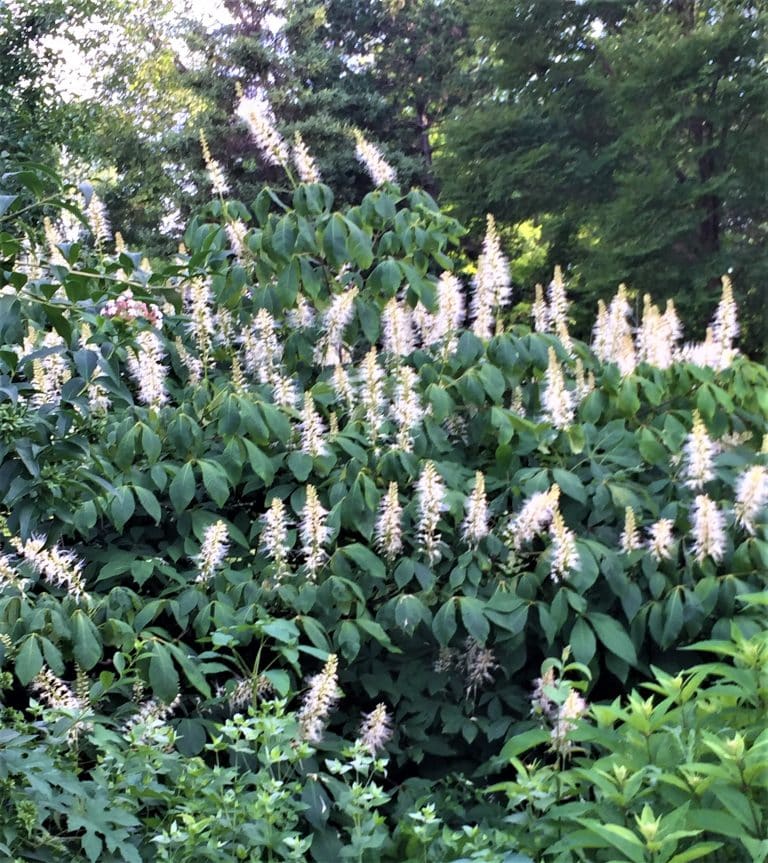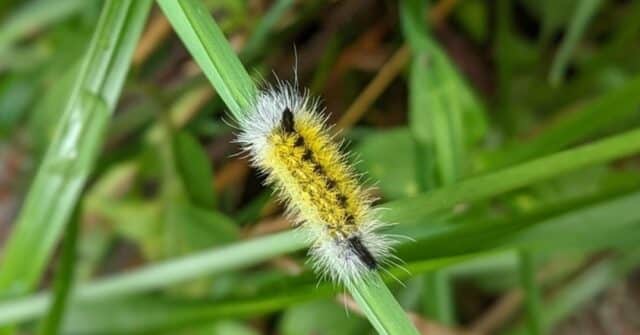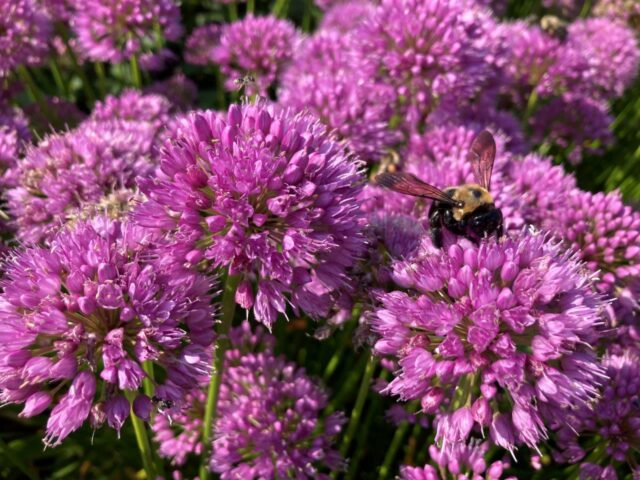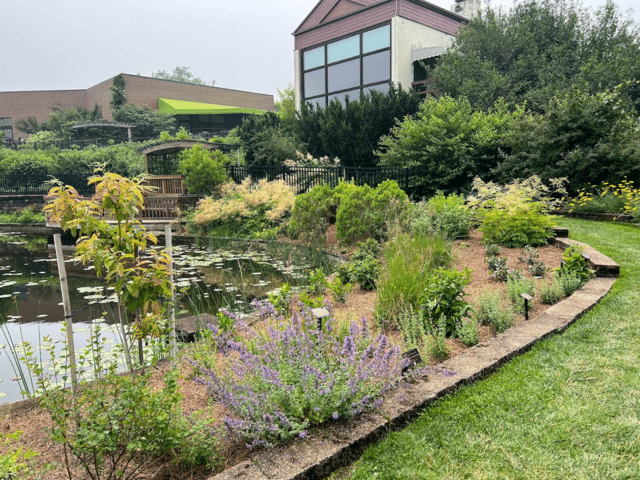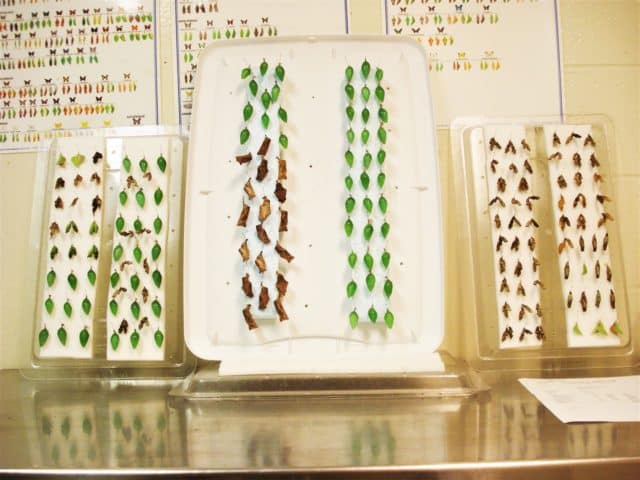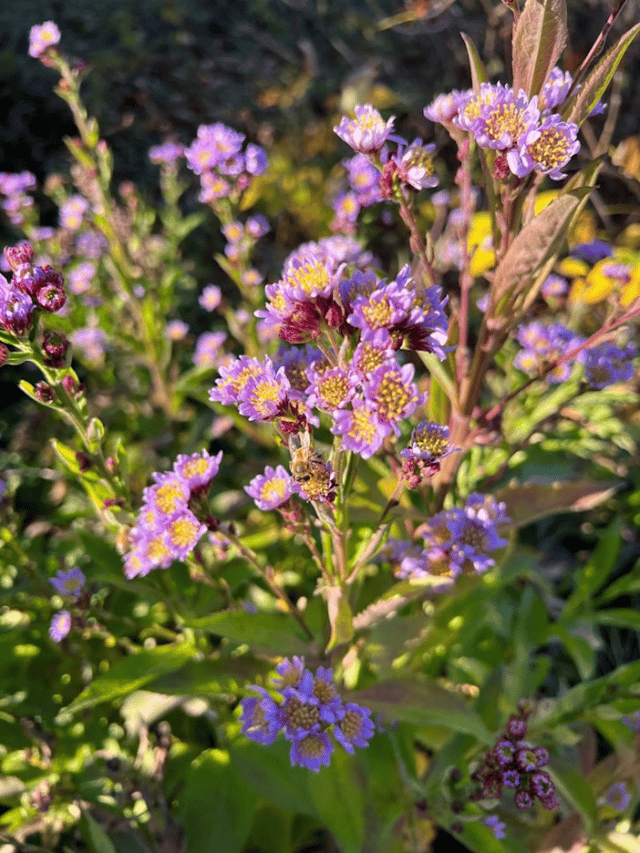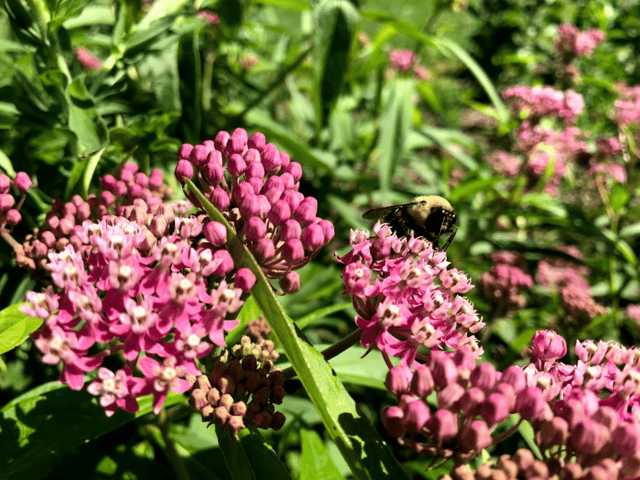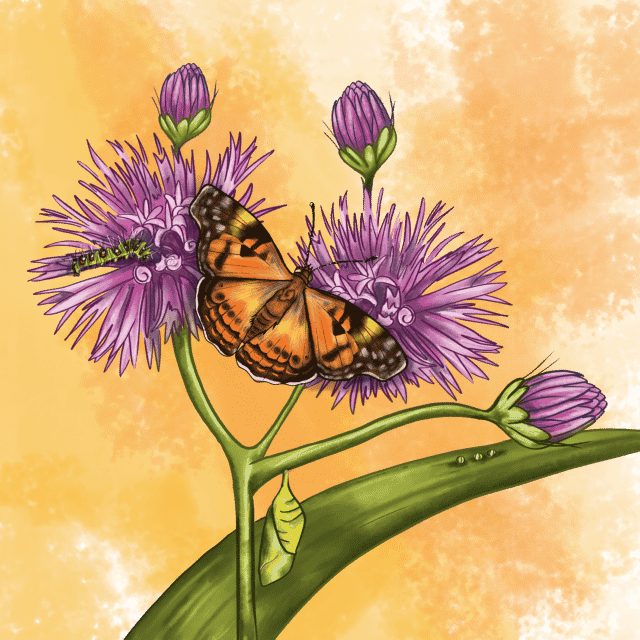
Mid July brings a riot of color to the Arlene and Arthur S. Holden Jr. Butterfly Garden at the Holden Arboretum. There are also “flying flowers” – butterflies – which bring an extra dimension to the garden. Some of these are large and easily identified as they fly by, such as Monarchs and Tiger and Black Swallowtails. Also common, but much easier to overlook, are the Peck’s Skippers, Pearl Crescents and Eastern-tailed Blues, as they are much smaller. Check out the smartphone tour Hosting Butterflies on display from June – October, which features a few of our favorite fluttering visitors to the Garden.

A successful butterfly garden not only includes flowering plants with nectar for the butterflies and other pollinators, but also includes “host” plants for the butterfly caterpillars. While you explore the garden this summer, pick up a Host Plant List brochure to discover the dozens of host plants currently growing and supporting native butterflies in the garden. A female butterfly will land on a plant and “taste” it with her feet, to determine whether it is a suitable plant for her to lay her eggs upon. Some butterfly caterpillars are able to survive and thrive on many different plants. Black Swallowtails, for example, can lay their eggs upon parsley, dill, fennel, carrots, Queen Anne’s lace and rue.
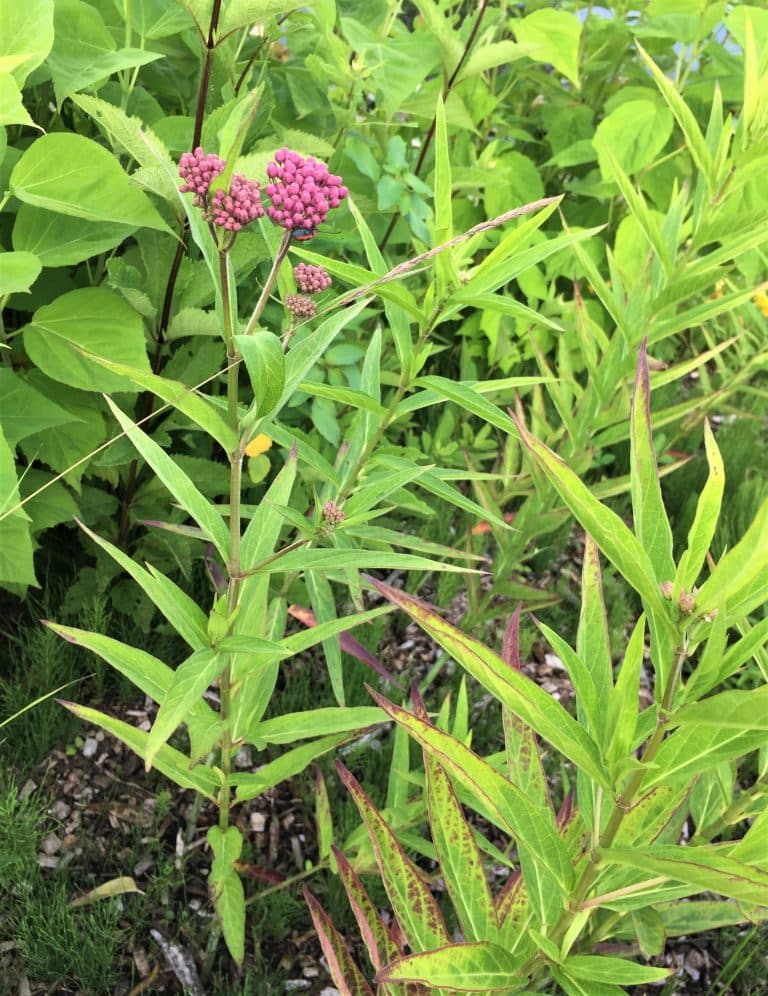
Monarch butterflies lay their eggs exclusively upon plants in the milkweed family. Fortunately, there are three species of milkweed that do well in Northeast Ohio: Common milkweed (Asclepias syriaca), Swamp milkweed (A. incarnata), and Butterfly milkweed (A. tuberosa). Common milkweed has the largest leaves and can grow up to 5 feet tall. It can be cut back during the growing season to encourage more growth. It will have pink tennis ball size clusters of flowers with a pleasant scent, but it can spread aggressively. Swamp milkweed can tolerate wetter soil, but grows fine in the garden. It will have smaller pink or white clusters of flowers with narrower leaves and gets to about 3 feet in height. Butterfly weed blooms orange or yellow and has the smallest leaves of the three milkweeds and will be about 1 ½ to 3 feet tall. All three milkweeds bloom in the butterfly garden during mid-July.
The Bottlebrush Buckeye are in blooms into early August. It will be full of butterflies and an assortment of bees and other pollinators. It is a sight that should not be missed.
Though we love to have you, a sight like this can be replicated in your own space, whether it is a backyard, community garden, or balcony. During your next visit, pick up a Butterfly Garden Planting Guide brochure to discover the necessary steps to create a Butterfly Garden of your own!
Resources to Guide your Butterfly Garden Experience
